My next find was arguably my biggest find.
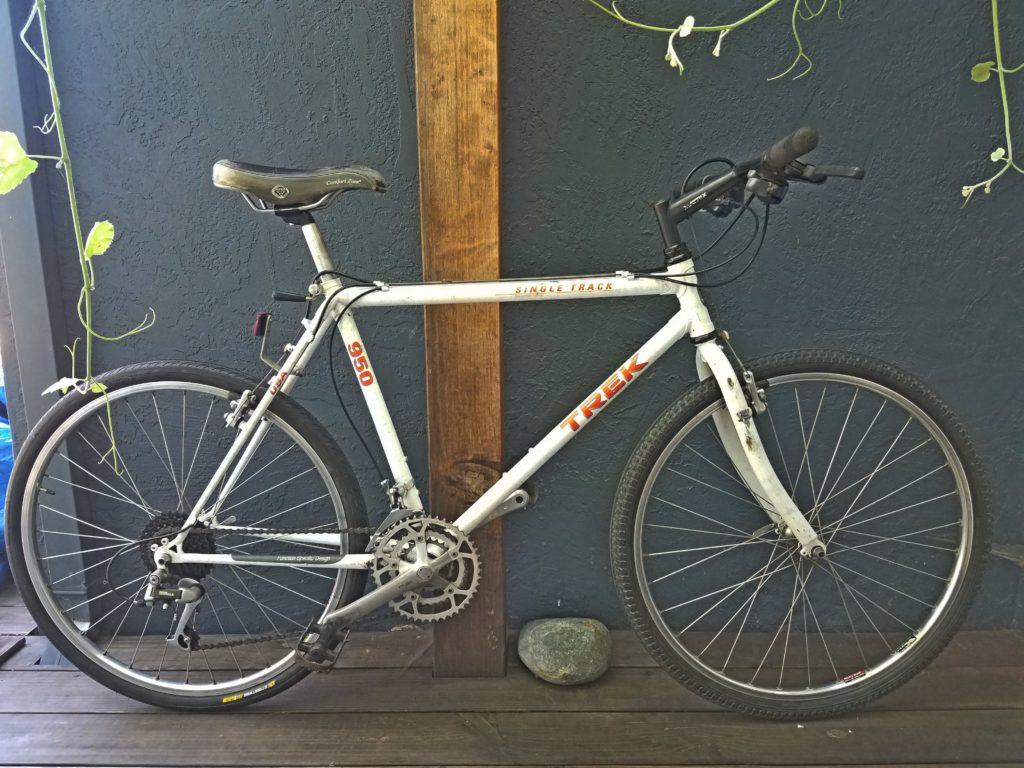
True bike nerds will immediately spot the lugged joints. There’s always disagreement on the meaning of “vintage“, but in my opinion this 1991 Trek SingleTrack 950 is easily classic rather than outdated.



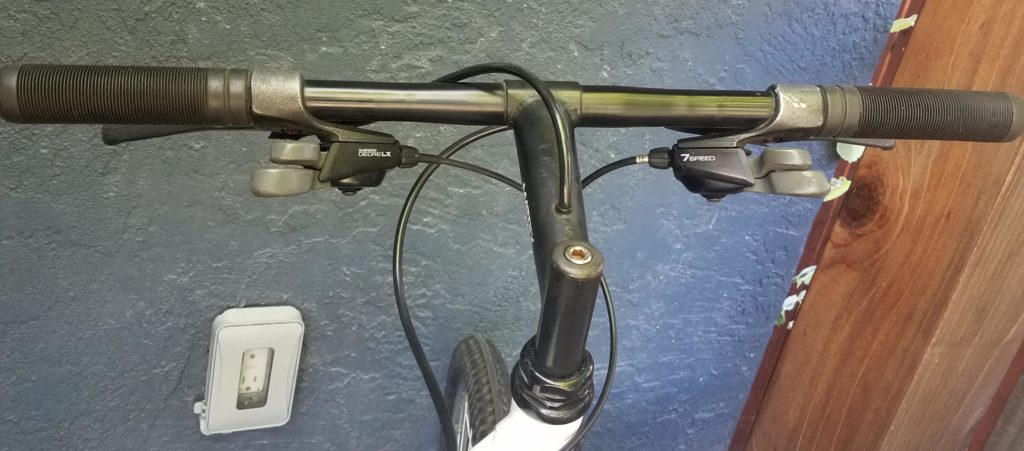
The original owner had cared for it well, but it had languished in the garage for decades. It was rideable, just barely, as a single-speed. I cleaned the derailleurs and changed the cables, to no avail. Finally, RJ the Bike Guy taught me how to de-gunk ancient shifters, which miraculously restored operation. As too often happens, only after getting to know the bike so intimately did I realize that our fates were misaligned.
1991 was the last (or next-to-last) year that Trek made fully lugged frames, and soon after that, they stopped using U.S. steel altogether. Even fully overhauled, the primeval drivetrain and brakes didn’t work as smoothly as I wanted, so I’d have had to upgrade them. This beauty had all original components except tires and saddle, and dismantling it would have been a sin. I also knew that I’d obsessively baby it to maintain its vintage-ness, and it would be a prime target for theft out in the wild. Despite these incompatibilities, I wasn’t ready to let go. Against my will, I had become attached to this gem and had no choice but to hang onto it while I continued the search.
By this time I knew a good deal as soon as I spotted it. No hesitation. That’s how I snagged this 1996 Trek SingleTrack 970.
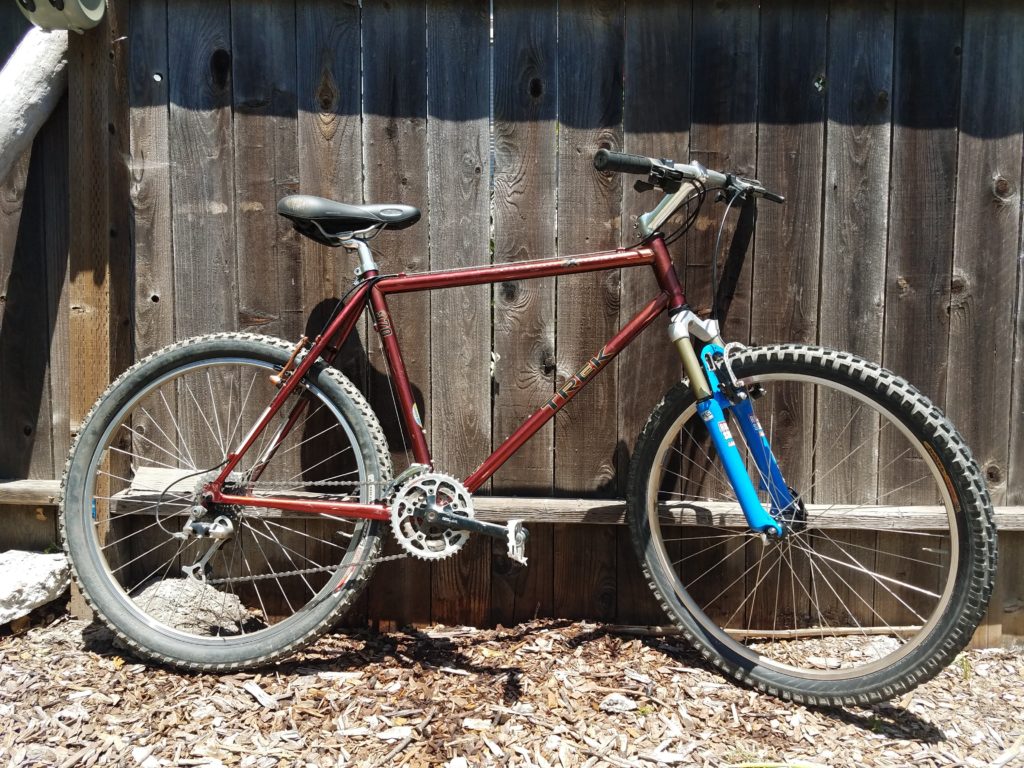
1996 may have been the last model year that Trek made its bikes in the U.S. Everything on this bike was in great condition and functioned perfectly with minimal adjustment. Sadly, ideals are rarely achieved. After a few rides, it just didn’t feel right. I preferred a slightly smaller frame.
At this point I had 5 bikes, 4 of which were intended for the same purpose, and each day brimmed with self-loathing. I live in ~500 square feet, so the bikes were all up in my grill, a constant reminder of the ‘tuition fees’ I had paid. Even worse, I found each uniquely charming, and was not ready to part with a single one.
The only silver lining was that I had became a more discerning shopper. Weeks of obsessive Craigslist refreshes turned into months without a further acquisition. Sizing was important, so I never checked out a bike in person if the seller couldn’t give specifics. It’s worth noting here that my first serious mountain bike was a late-90’s Specialized Stumpjumper. I left it with a friend when I moved overseas in 2009; it is gone but never forgotten.
In hindsight, a steel Stumpjumper was always my deepest subconscious desire. One had been listed for weeks, but the ad contained few details and the seller was reticent. I was patient – the price declined and eventually became a good deal even for the frame alone. But the sizing! How could I determine the sizing before I journeyed 40 miles to see it?
It seems obvious now, but I’m still proud of my solution. The seller had posted a photo that was approximately a perpendicular shot of the bike. I knew that the rims were standard 559 mm, so I calibrated against that distance and placed a ruler against my screen to estimate the frame tube lengths. These estimates matched up with the bike geometry listed in the 1995 Specialized catalog, so I was fairly sure of their accuracy. I had enough certainty to make the trip!
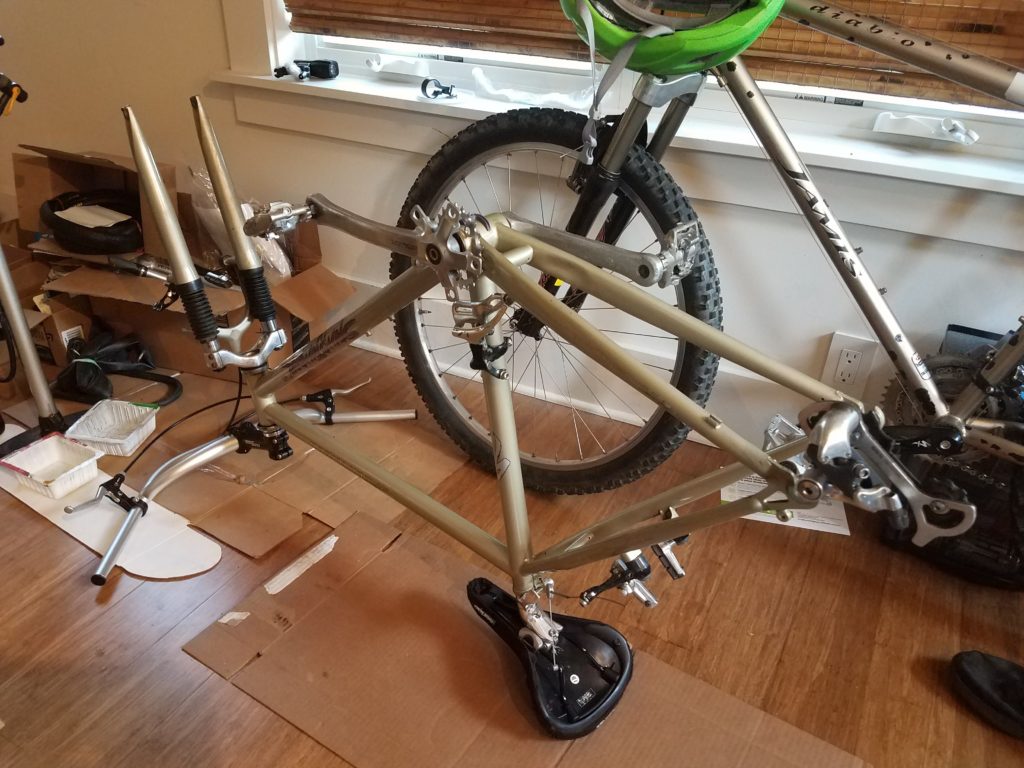
By most standards, the Stumpjumper was in awful condition. The tubes and rim strips had literally disintegrated into shards of brittle plastic (when I spun the wheels they sounded like maracas), the shifters were cracked, and the grips were semi-liquid. My theory is that it had been baked in an industrial oven. But that hardly mattered to me. The frame was nearly mint, barely a ding or scratch. And the size was perfect.
The Stumpjumper was my final acquisition. The madness was over, except for the unresolved issue of possessing 5 redundant bikes. Exercising a tiny bit of proactivity, I promptly sold the old Specialized Rockhopper that had been my trusty commuter (yes, redundant with folder) for nearly my entire grad school career. I would say more but it’s just too painful.
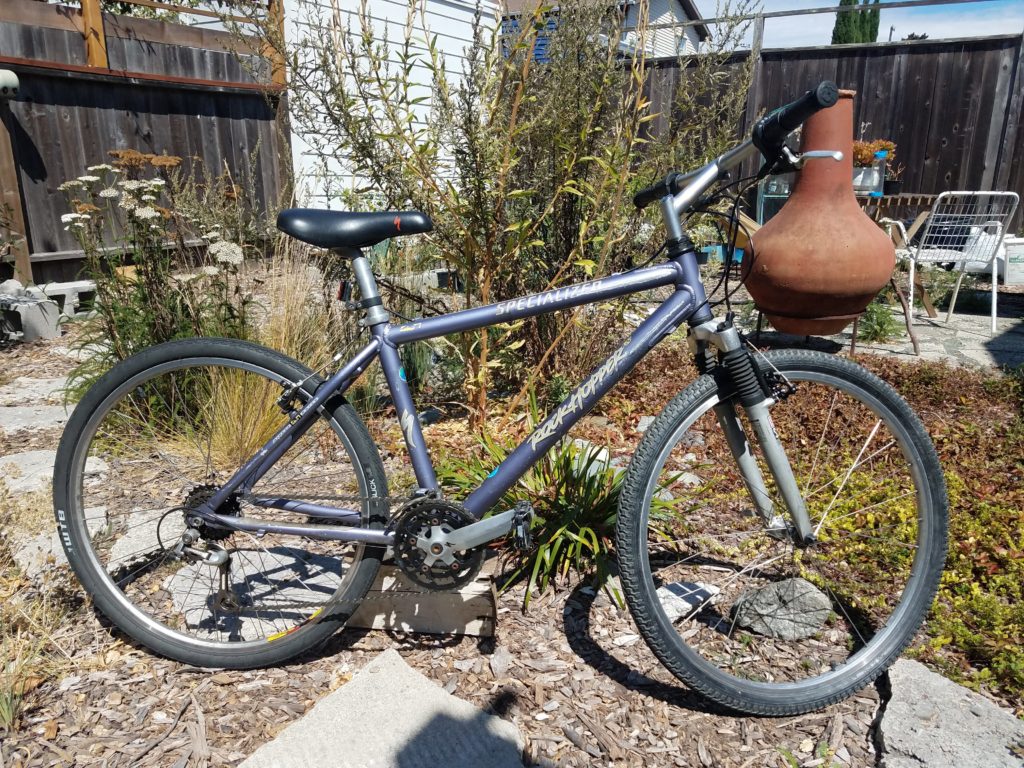
I maintained a steady state of 5 bikes for over half a year. They were a ceaseless wellspring of anxiety, embodying the epic struggle between my drive toward minimalism and my natural hoarding instinct. It took a worldwide disaster to break the impasse. A few months into the COVID19 lockdown, the opportunist in me overcame the hoarder and I finally made peace with letting go of the two Treks. Both are in better hands now, with people who will put them to good use and care for them as they deserve.
Since my return to Stumpjumperdom, I’ve vacillated between the Diablo and the Stumpjumper, and I’ve rationalized that it’s not insane to keep both. My stable is stable at 3. But even now, occasionally and without warning, that beautiful old Trek 950 surfaces in my mind and I can’t avoid the twinge of longing.
Additional resources:
- Trek Catalog Archive (also includes Gary Fisher, Klein, LeMond)
- Specialized Catalog Archive (dig around for catalogs from other manufacturers)
- Waterside Workshops Community Bike Shop (for work that requires a bike repair stand and a full assortment of tools; please donate to this excellent non-profit!)
- Missing Link Bicycle Co-op (another option for free bike repair stand and tools; a friendly Local Bike Shop)
- Berkeley Tool Lending Library (yet another reason to love public libraries; I’m considering naming this in my will)
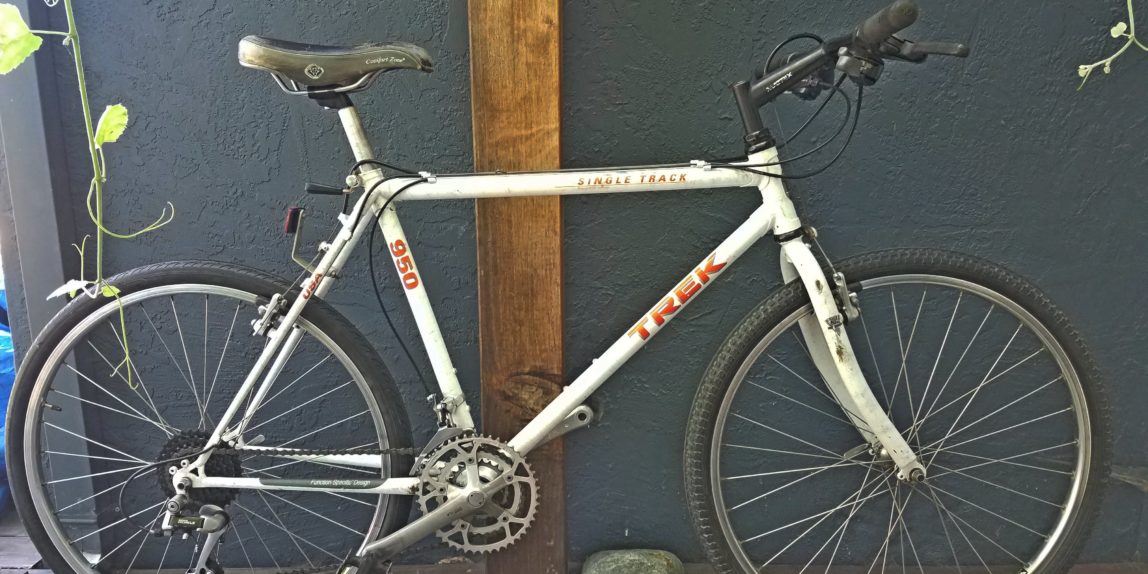
lugged american treks , over taiwan anything imho
I have 2 , 950 and one 970
I had and sold a couple rocks
and one front susp. oem stumpy
stump I would have kept , but it lacked brace-ons for rear rack
I finally realized how handicapped the old stumpys are because they have so few braze-ons. It really gave me hell when trying to put on racks and fenders.